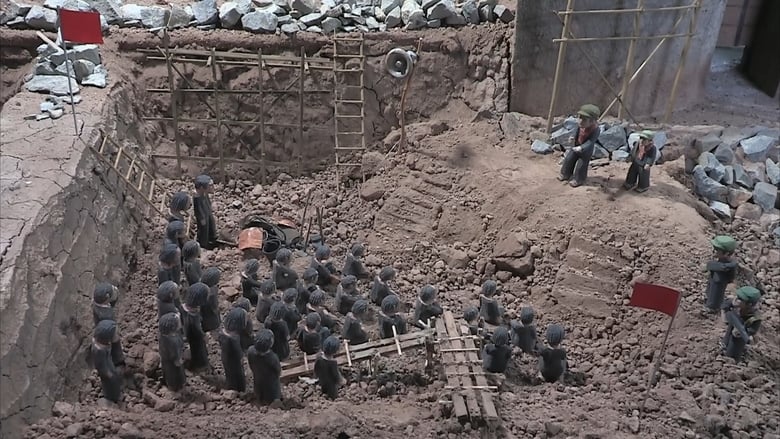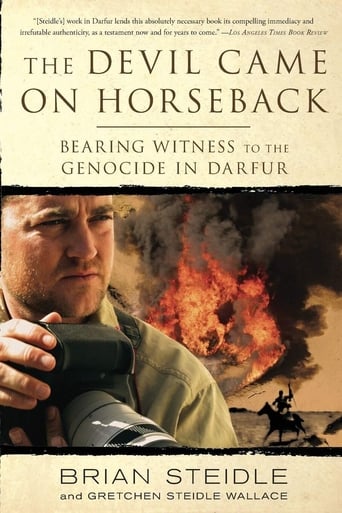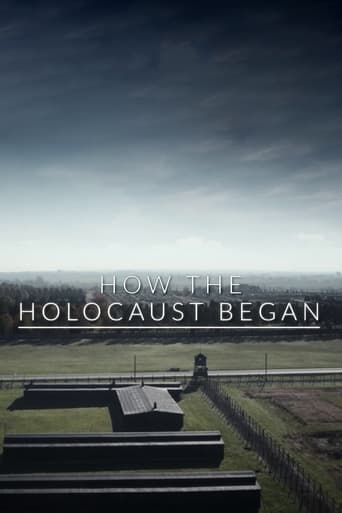

The Missing Picture (2013)
Rithy Panh uses clay figures, archival footage, and his narration to recreate the atrocities Cambodia's Khmer Rouge committed between 1975 and 1979.
Watch Trailer
Cast


Similar titles
Reviews
"The Missing Picture" is a very unusual documentary and was nominated for the Oscar for Best Foreign Language Film. It's so unusual because filmmaker Rithy Panh tells the story both with archival footage AND little figurines that he created for the film! Perhaps this was a way to make the horror of the Khmer Rouge easier for the audience to watch, as an hour and a half of footage of atrocities would be just about unwatchable considering how brutal this regime was. And, since you don't see live actors in the film-- just narration and film clips, seeing it in its original French language or the optional English language form is a roughly identical experience, or at least I assume so.While I enjoyed how unique this film was and figure its uniqueness probably led to its Oscar nomination, I must confess that the narration made an exciting story very, very slow and a bit tedious. Perhaps the French language version is better, I don't know. All I know is that a film like "The Killing Fields" or a regular documentary about the subject is something I could have enjoyed or at least stuck with better.
"The missing picture" is a novel form of documentary cinema. The theme is the Khmer rouge regime in Cambodia. This heartbreaking story is told using clay figurines in sets built from wood, leaves, clay and water. Suddenly you'll be inside villages in rain forests witnessing human inflicted hunger, death, rot and suffering. It's a story of how a twelve year old kid looses his father, mother, sister and brother to ideology, flags, slogans and submissiveness of human thought.This film captures his pain with far greater purity because the viewer's mind knows that Clay figures are not actors, actors act (they lie). The figurines are real, they are suffering clad in black clothes, armed with a wooden spoon. The figurine portray the resistance in those unfortunate souls by the same mode - a tiny gesture and silence.Camera-work for such miniature sets is a display of pure innovation and diligence on the creator's part. The background score is perfect, you can hear the sounds of the forest, tilling of the earth or playing of children in the distance. The narration has no room for sensationalism, the pain, sarcasm and anger is heartfelt and the story is personal.Every viewer owes it to those lost lives to never let the tragedy happen again.
History, it is said, is written by the victors. But sometimes, it is the victims - or more accurately, the survivors - who get to do the writing. That is the case with Rithy Panh, a Cambodian who survived the horrors of life under the Khmer Rouge in the 1970s. Panh was a mere child when he suffered the loss of his parents and siblings in the various grueling work camps to which they had been consigned. As an adult, Panh went on to become a documentary filmmaker dedicated to telling his story to the world. It was a purge aimed mainly at the intelligentsia of Cambodian society - the well-off and educated - who posed the greatest threat to the regime's vision of a collectivist agrarian utopia.Where, Panh asks, are all the pictures of children starving, of people being worked into the grave that more accurately portray the reality of this 20th Century holocaust? Somehow, those were not recorded and preserved for posterity. Instead, we get a series of grainy propaganda images - of workers seemingly happy in their toil, of leaders of the revolution inspiring the masses with their promises of a Communist paradise - that were officially sanctioned by the government. So Panh has taken it upon himself to provide the "missing" pictures the Pol Pot regime failed to provide to the world. The Oscar-nominated documentary "The Missing Picture" is a stark, haunting illustration of what life was like under Pol Pot's brutal dictatorship. The director alternates between grainy, mostly black-and- white footage taken at the time and diorama-style re-creations using strategically arranged and intricately carved clay figurines. These frozen, expressionless figures, with their searching, unblinking eyes, lift the suffering that the actual people endured to a near-surreal level, while the wistful, soft-spoken narration by Jean-Baptiste Phou echoes the human tragedy at the core. Indeed, the approach Panh has taken manages to personalize a holocaust that, given its enormous breadth and scope - an estimated one to three million people died under the regime - would otherwise be incomprehensible to the human mind. "The Missing Picture," by "going small," paradoxically helps us to see the tragedy writ large.
Philosopher Albert Camus said, "Good intentions may do as much harm as malevolence if they lack understanding." Indeed, we have seen many examples in history of how ideology, no matter how well intentioned, can lead to disastrous consequences if not tempered with compassion and respect for the rights of the individual. We saw it in Nazi Germany and in the Soviet Union during the Stalin era. There is no more blatant example of the distorted use of ideology than in the 1975 takeover of Cambodia (renamed as the Democratic Republic of Kampuchea) by the Khmer Rouge under the leadership of Pol Pot (aka Saloth Sar).While the goal of the Khmer Rouge was to promote an agrarian socialist economy and eradicate any remaining traces of individuality, their process of forced labor and communal living led to the death of millions of people and when they fled in 1979, they left behind a trail of tears. Only thirteen-years-old at the time, Director Rithy Panh, lost his entire family in Cambodia during those years and has documented his experience in The Missing Picture, winner of the Un Certain Regard award at the 2013 Cannes Film Festival. It is a deeply moving film that uses hand-carved clay figures sculpted by Sarith Mang together with archival news footage and propaganda films used by the Khmer Rouge to paint an overwhelming picture of man's inhumanity to man.Although the sadness etched on the faces of the painted clay figures moving on doll-house sets are somewhat distancing and can only give us a vague idea of the amount of suffering that took place, Panh's affectingly poetic voice-over helps us to bridge that gap by offering the perspective of one who lived through those years. In their four years in control of Cambodia, the Khmer Rouge destroyed food sources outside of centralized control, forbade fishing and the planting of mountain rice, abolished medicine and hospitals, and refused offers of humanitarian aid. Now 50, Panh says that making the film has helped him to come to terms with his memories, reflecting that, "in the middle of life, childhood returns—sweet and bitter." While the film's historical perspective is limited, it gives us a sense of the vibrant life of Phnom Penh before the Khmer Rouge arrived to evacuate the city, uprooting and exiling millions of families to re-educate them in labor camps. Those not needed were told, "To keep you is no benefit, to destroy you is no loss." Those forced to leave were told that the evacuation was meant to protect them from American bombs and they would be able to return to their homes in a few days. Panh refers to the U.S. bombing of Cambodia during the Vietnam War as a factor that persuaded Cambodians to look for an alternative to their current political system but he does not attempt in any way to justify the actions of Pol Pot.The Missing Picture, while grim and perhaps repetitive, is a powerful prayer that no child ever has to again witness what Panh saw: his family forced from a home filled with music and literature, his father going on a hunger strike and dying from starvation and illness; the execution of children who were forced to denounce their parents; sitting on the cold ground night after night watching propaganda films displaying happy faces while outside thousands starved. Under the leadership of Pol Pot, an estimated 2.2 million people died from execution, illness, or starvation, a tragedy that left a legacy of suffering that continues until the present day. Miraculously, Panh survived to tell his story and in The Missing Picture, has left us a testament of unbounded courage.







